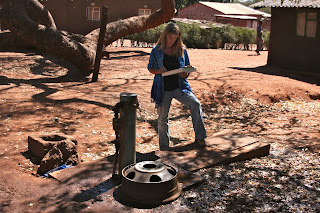Dr. Alexander collects data and water samples from public taps serving the community in Northern Botswana. Water quality changes occur not only in river but at collection points. Waste and water around the tap attracts both domestic and wild animals to the area. Increased interaction between humans - wildlife - and waste has the potential to greatly transform the landscape change pathogen transmission potential and risk. As humans change the environment, these change come back to influence the health of animals and humans. Our recent work identified that the highest level of drug resistance in banded mongoose (above) occurred in the Chobe National Park. Under this program, we are attempting to identify landscape features that promote exchange of microorganisms and the spread of antibiotic resistance. Where are the linkages between humans and their natural environment?


No comments:
Post a Comment